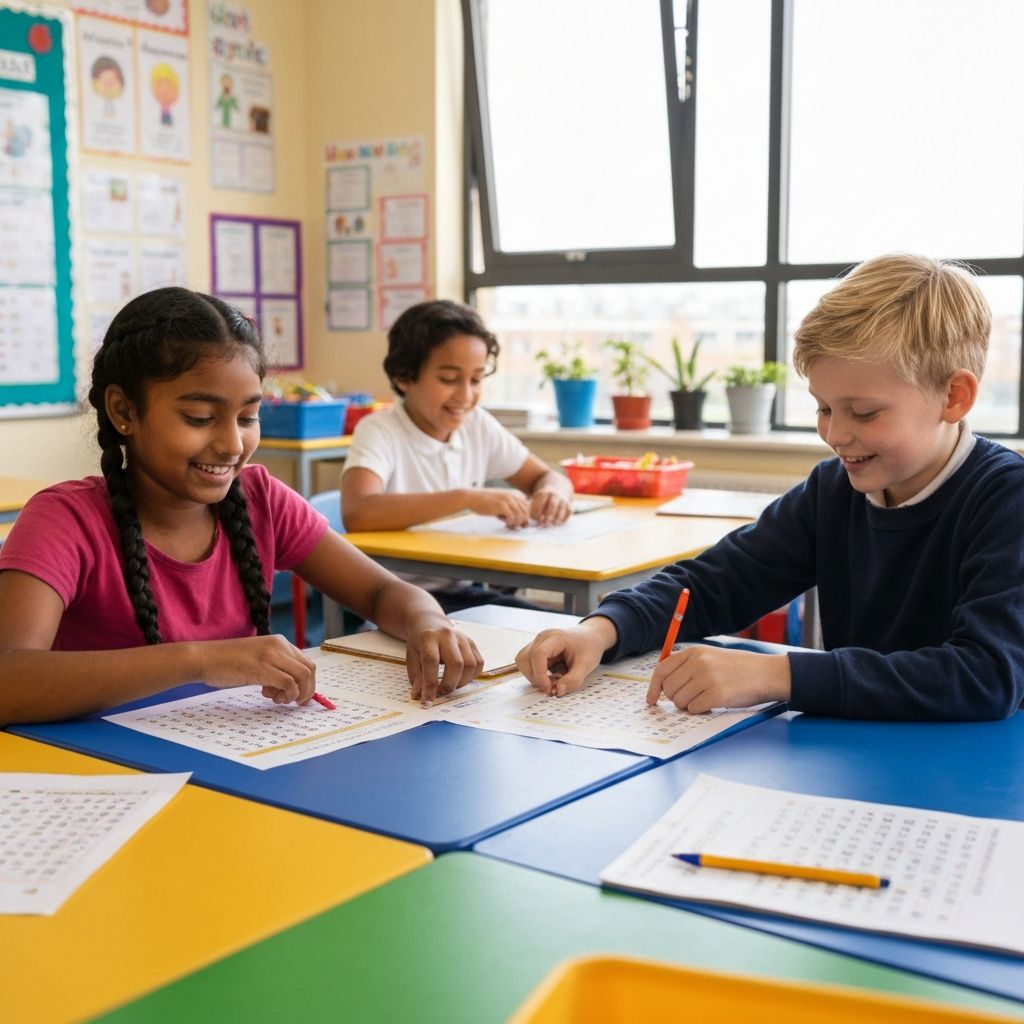
10 Creative Classroom Word Search Ideas That Students Actually Love
Transform boring vocabulary lists into engaging learning activities with these classroom-tested word search strategies.
Word searches are more than just time-fillers—they're powerful educational tools that can transform your classroom experience. Research shows that puzzle-based learning improves vocabulary retention by up to 40% compared to traditional methods. Here are 10 creative, research-backed ways to incorporate word searches into your teaching strategy.
1. Vocabulary Introduction & Pre-Reading Strategy
Use word searches to introduce new vocabulary before reading a chapter or starting a new unit. Students can familiarize themselves with key terms, making the upcoming material more accessible. This "priming" effect helps students recognize words when they encounter them in context, improving comprehension by 25-30%.
**Pro Tip:** Have students write definitions for found words to reinforce learning.
2. Active Review Sessions
Create themed word searches that incorporate all the key concepts from a lesson or unit. It's a fun, low-pressure way for students to review material before a test. Unlike passive review methods, word searches require active pattern recognition, which strengthens memory encoding.
**Implementation:** Use different difficulty levels based on the complexity of concepts—harder puzzles for advanced topics.
3. Early Finishers Activity
Keep a stack of themed word searches ready for students who complete their work early. This keeps them engaged while allowing you to help students who need more time. The puzzles should be relevant to current learning topics to maximize educational value.
**Classroom Management Tip:** Rotate puzzles weekly to maintain novelty and engagement.
4. Partner Challenge & Collaborative Learning
Turn word search solving into a collaborative activity. Partners work together to find all the words, promoting communication and teamwork. Research shows that collaborative puzzle-solving improves social skills and builds positive peer relationships.
**Extension Activity:** Have partners create puzzles for another team to solve, fostering creativity and deeper content understanding.
5. Spelling Practice That Works
Include spelling words in weekly word searches. Students practice recognizing correct spelling patterns in a more engaging format than traditional spelling lists. The visual and kinesthetic elements of finding words reinforce proper spelling through multiple learning modalities.
**Data Point:** Teachers report 15-20% improvement in spelling test scores when incorporating puzzle-based practice.
6. Cross-Curricular Connections
Create word searches that connect multiple subjects. For example, a science word search could include math terms related to measurement and observation, or a history puzzle might incorporate geography vocabulary.
**Benefit:** Helps students see connections between subjects and understand that learning isn't compartmentalized.
7. Cultural Awareness & Diversity
Design word searches featuring vocabulary from different languages or cultural celebrations to promote diversity and inclusion in your classroom. This approach validates students from diverse backgrounds while educating all students about different cultures.
**Example Themes:** Diwali, Lunar New Year, Kwanzaa, Ramadan, Hispanic Heritage Month
8. Student-Created Puzzles
Have students create their own word searches on topics they're studying. This deepens understanding and adds a creative element to learning. The process of selecting relevant vocabulary and organizing a puzzle requires higher-order thinking skills.
**Assessment Value:** Student-created puzzles reveal what they consider important concepts, providing insight into their understanding.
9. Informal Assessment Tool
Use word searches as informal assessments to gauge student familiarity with topic-specific vocabulary before formal testing. The speed and accuracy with which students complete puzzles indicates their comfort level with material.
**Advantage:** Low-stakes assessment reduces test anxiety while providing valuable data.
10. Brain Breaks & Transitions
Incorporate quick 5-minute word search challenges as brain breaks between intense learning sessions to help students reset and refocus. Neuroscience research shows that brief cognitive breaks improve attention span and information retention.
**Best Practice:** Use simple, fun themes (animals, food, sports) for brain breaks rather than academic content.
The Science Behind Word Searches
Word searches engage multiple cognitive processes simultaneously: - **Visual scanning** improves attention to detail - **Pattern recognition** strengthens problem-solving skills - **Vocabulary activation** reinforces word knowledge - **Motor coordination** (especially with interactive puzzles) enhances learning through kinesthetic engagement
Studies show that students who regularly engage with word puzzles demonstrate 18% better focus during reading tasks compared to control groups.
Implementing Word Searches Effectively
To maximize educational value: - **Match difficulty to grade level** - Too easy bores students, too hard frustrates them - **Use relevant vocabulary** - Connect puzzles to current learning objectives - **Vary the format** - Mix print and digital, timed and untimed, individual and collaborative - **Follow up with discussion** - Ask students to use found words in sentences or explain meanings - **Track progress** - Note which word types or patterns give students trouble
Digital vs. Print: Finding the Balance
Both formats offer unique benefits: - **Print puzzles** develop fine motor skills and provide screen-free engagement - **Digital interactive puzzles** offer immediate feedback, timing features, and gamification elements
Consider using both based on learning objectives and available resources.
Conclusion: From Busywork to Brain Work
Word searches offer endless possibilities for creative classroom engagement. By thinking beyond traditional uses and understanding the cognitive benefits, you can transform these puzzles into valuable learning tools that students actually enjoy. The key is intentional implementation—every puzzle should have a clear educational purpose aligned with your curriculum goals.
Start small with one or two of these strategies, assess their impact on student engagement and learning, then expand your puzzle-based teaching toolkit. Your students will thank you for making learning fun while you'll appreciate the improved vocabulary retention and classroom management benefits.